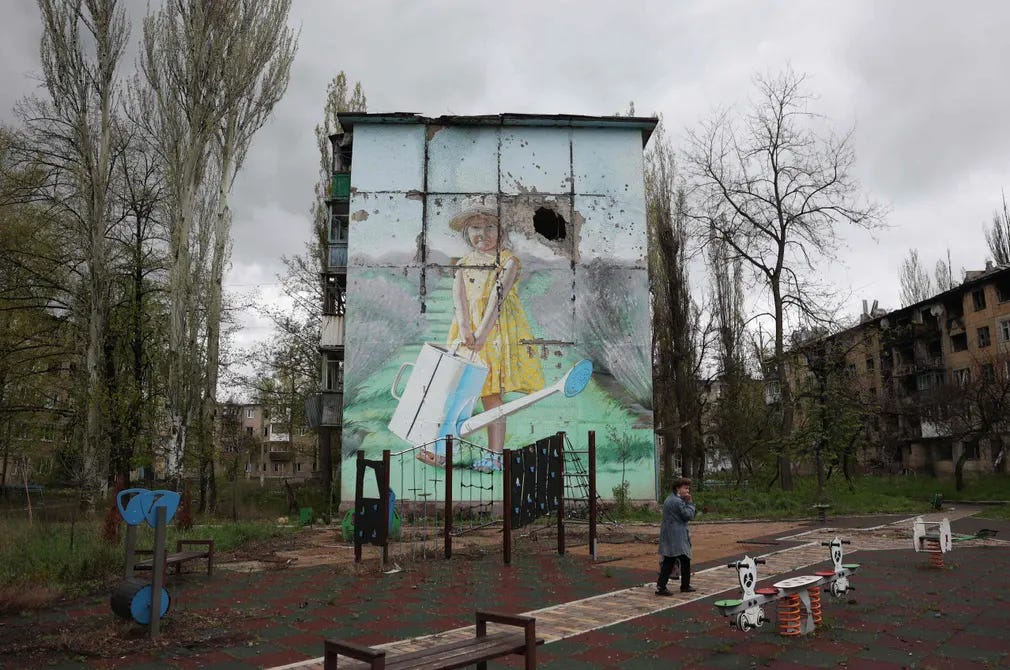Where is the Gray Champion?
I see plenty of prophets, but nobody astride Shadowfax, rearing on a hilltop.
Daniel Schmachtenberger: I think there are very near term risks in AI, in bioweapons, in planetary boundaries, in supply chains and quite a few things. Meaning, there are certain problems that the existing NGOs and nation-states and corporations and IGOs collectively are not on course to solve in time. If some additional action doesn't take place, catastrophic problems will occur.
—"Modeling the Drivers of the Metacrisis,” The Great Simplification #42 at 1:55:16
Pattern observation is both a blessing and a curse. In one way, it endows us with a rare ability among animals to project our own future from past events. Less fortuitously, we rely on that pattern as though it were set in stone even as conditions change.
In 1997, William Strauss and Neil Howe published The Fourth Turning, introducing what has come to be known as the Strauss-Howe generational theory. Their Big Idea was that world history—and American history in particular—follows a circular pattern of four generational archetypes, each lasting about 20 to 22 years. The whole cycle is called by the authors a “saeculem.”
The authors describe the observation by Nathaniel Hawthorne that crises seem to summon the presence of a "Gray Champion.” Think The Twin Towers: Gandalf with a thousand riders about to relieve Helm’s Deep. According to the theory, the Gray Champion reappears at 80 to 90 year intervals, accompanied by a prophet. In the American Revolution, historians lean towards Washington and Franklin but what comes to my mind is the Chicamaugan Gray Champion Tsi'yu-gunsini (Dragging Canoe) who inspired Tecumseh and his prophet brother, Tenskwhatawa. The 19th century saeculem offered up combos like Frederick Douglas and Lincoln or maybe John Brown and Lincoln. Or maybe the great Ukrainian mystic Helena Petrovna Blavatsky and Vladimir Lenin. In the 1930s, we had FDR, Father Charles Coughlin and Aimee Semple McPherson.
Set behind the Gray Champion, marking the three seasons that will follow, are the younger archetypes—middle-aged Nomads, coming-of-age Heroes, and youthful Artists. The arrival of the Gray Champion and prophet signal the advent of a crisis, after which there can be a re-establishment of order (by the Nomads and Heroes), a cultural flowering (by the Artists), and a rapid change to something new, potentially disruptive, precipitating a new crisis. This knowledge might be scary to the readers, the writers warn. Anyone, and any nation, would prefer to avoid a crisis. However, the rhyme that is history does not work by our druthers. The authors urge the readers to prepare for what comes next depending on where they find themselves in the pattern.
I am not going to tell you that Joe Biden is the Gray Champion and Boss Trump is the Prophet. That would be too simple, and anyway, who knows? The Gray Champion could be Noam Chomsky and the Prophet could be Paul Ehrlich, Greta Thunberg, or Leo DiCaprio.
In his 1968 opus, The Population Bomb, Ehrlich proposed the now well-established formula, I=PAT. Impact (climate change, biodiversity loss, ocean plastic, radioactivity, pandemics, and ubiquitous war) equals Population times Affluence times Technology. Which of those three sources would you care to reduce in order to avoid Impact?
If we go back to the last saeculum at the crisis moment of the Dust Bowl/Depression/World War II, the first archetypes to emerge, the children of 1908, were a Nomad generation fleeing the chaos, followed by a Hero generation that sacrificed itself to restore order. The Nomads blamed the catastrophic Depression and War on their parents, a generation of Millennial Missionaries.
The return to order—or regimentation—was kind to Boomers—youthful Artists (b. 1946-68) who came of age in an epoch characterized by improvements to social and economic well-being, a sense of optimism, especially towards technology, and Sesame Street. Strauss and Howe posit that the racism, sexism, and groupthink of the 1950s were negative from the contemporary standpoint but were progressive when compared to the thinking of 1888 Missionaries. When the artistic Boomers graduated into the workforce, they created new technology, liberalized and equalized working conditions, and brought to fruition the changes of civil rights, gender rights, and recognition of indigenous peoples. They empowered the multiculturalism of the United Nations. They bequeathed a golden age of art and music to their children.
When their children, the New Millennials, entered the workforce in the 90s to 2008, all that rapid change had been a bit too much. They felt insecure. They valued simplicity and survival over reforms. They were abruptly buffeted by economic recession, inflation, and proxy wars. They embraced libertarian conservatism. Many actually hoped for Y2K to stop the train. They were criticized by their elders for being selfish and destroying the legacy of the preceding artistic generation, but they saw simple jobs, retirement plans, real estate investments, and creature comforts as a return to family values, evangelical religion, and normalcy. In short, they were Missionaries destined to recreate the conditions of another 1928.
This brings us to where we are in 2023, nearing a fin de siecle of the saeculum that began with the crises of the 1930s. Our blissed-out, Bible- or Koran-thumping forebears have laid a banquet of existential threats. If we are able to avoid atomic war, the world is heading to perhaps 3.5 degrees warmer, and maybe more, during the lives of the present generation.
“There are fair and reasonable concerns that focusing on worst-case scenarios will cause public despair and paralysis,” writes David Spratt in the April 19th Bulletin of Atomic Scientists. “But when risks are existential, it is precisely those high-end possibilities of system collapse, rather than the middle-of-the-road linear probabilities, that must be the focus of concern and should spur the world to action.”
I’m looking out my window and scanning the horizon for a Gray Champion. I see plenty of prophets, but nobody astride Shadowfax, rearing on a hilltop. This may be the point where we put the Strauss-Howe generational theory to a real test.
I’m waiting.
References
Strauss W. and N. Howe, The Fourth Turning: An American Prophecy: What the Cycles of History Tell Us About America's Next Rendezvous with Destiny. Crown 1997.
Spratt, D., Faster than forecast, climate impacts trigger tipping points in the Earth system, Bulletin of Atomic Scientists April 19, 2023
Meanwhile, let’s end this war. Towns, villages, and cities in Ukraine are being bombed every day. Ecovillages and permaculture farms have organized something like an underground railroad to shelter families fleeing the cities, either on a long-term basis or temporarily, as people wait for the best moments to cross the border to a safer place, or to return to their homes if that becomes possible. There are 70 sites in Ukraine and 500 around the region. As you read this, we are sheltering some 2,000 adults and 450 children. We call our project “The Green Road.” With public donations from people like yourself,
88 houses were restored
33 wells were restored
32 wood heating stoves in houses were restored
water was supplied to 34 houses
5008 euros were spent on gardens, orchards, and animals
17,448 euros were spent on food
19,045.70 euros went to household and kitchen items
12,558.80 euros provided schoolbooks, musical instruments and hand tools.
For most of the children refugees, this will be their first experience in ecovillage living. They will directly experience its wonders, skills, and safety. They may never want to go back. Those that do will carry the seeds within them of the better world they glimpsed through the eyes of a child.
Those wishing to make a tax-deductible gift can do so through Global Village Institute by going to http://PayPal.me/greenroad2022 or by directing donations to greenroad@thefarm.org.
There is more info on the Global Village Institute website at https://www.gvix.org/greenroad or read this recent article in Mother Jones. Thank you for your help.
The COVID-19 pandemic destroyed lives, livelihoods, and economies. But it has not slowed climate change, a juggernaut threat to all life, humans included. We had a trial run at emergency problem-solving on a global scale with COVID — and we failed. 6.87 million people, and counting, have died. We ignored well-laid plans to isolate and contact trace early cases; overloaded our ICUs; parked morgue trucks on the streets; incinerated bodies until the smoke obscured our cities as much as the raging wildfires. The modern world took a masterclass in how abysmally, unbelievably, shockingly bad we could fail, despite our amazing science, vast wealth, and singular talents as a species.
Having failed so dramatically, so convincingly, with such breathtaking ineptitude, do we imagine we will now do better with climate? Having demonstrated such extreme disorientation in the face of a few simple strands of RNA, do we imagine we can call upon some magic power that will change all that for planetary-ecosystem-destroying climate change?
As the world emerges into pandemic recovery (maybe), there is growing recognition that we must learn to do better. We must chart a pathway to a new carbon economy that goes beyond zero emissions and runs the industrial carbon cycle backward — taking CO2 from the atmosphere and ocean, turning it into coal and oil, and burying it in the ground. The triple bottom line of this new economy is antifragility, regeneration, and resilience. We must lead by good examples; carrots, not sticks; ecovillages, not carbon indulgences. We must attract a broad swath of people to this work by honoring it, rewarding it, and making it fun. That is our challenge now.
Help me get my blog posted every week. All Patreon donations and Blogger or Substack subscriptions are needed and welcomed. You are how we make this happen. Your contributions are being made to Global Village Institute, a tax-deductible 501(c)(3) charity. PowerUp! donors on Patreon get an autographed book off each first press run. Please help if you can.
#RestorationGeneration
Thank you for reading The Great Change.







